Independent living is a form of housing designed for seniors who are still active and able to take care of themselves. It provides the perfect balance between privacy, socialization, and support for older adults. As seniors age, they may find that their current living situation is no longer suitable for their needs. Some may even struggle with daily tasks such as cooking and cleaning.
Independent living offers a solution by providing accommodations tailored to the specific needs of seniors while also promoting an active and social lifestyle. Many communities offer meal plans as part of their services, while others may have a communal dining area where residents can purchase and enjoy meals together. In these cases, residents are responsible for preparing their own meals but have the option to dine with others if desired.
Types of Meal Plans
Independent living communities may offer different types of meal plans to cater to the varying needs and preferences of their residents. These meal plans typically fall into three categories: full-service, partial-service, and a la carte.
- Full-service meal plans include all meals (breakfast, lunch, and dinner) provided by the community’s dining services. This option is ideal for seniors who prefer not to cook or have difficulty with food preparation due to physical limitations.
- Partial-service meal plans offer a set number of meals per day or week. For example, a community may provide breakfast and dinner every day but leave lunch as the responsibility of the resident. This type of plan allows for more flexibility while still providing some assistance with meal preparation.
- A la carte meal plans allow residents to choose which meals they would like to purchase from the community’s dining services. This option is best for independent seniors who can still prepare most of their own meals but may want to occasionally dine with others or take a break from cooking.
Benefits of Meal Plans in Independent Living
Having access to a variety of meal plans can greatly benefit seniors living independently in a community setting. Here are some advantages that come with participating in meal plans:

- Nutritious and balanced meals: Most communities have trained chefs who create menus that are specifically designed to meet the nutritional needs of seniors. This ensures that residents are getting proper nourishment and can maintain a healthy diet.
- Socialization: Sharing meals with others is an important aspect of human interaction that can often be lacking for seniors living alone. Meal plans provide regular opportunities for residents to come together, share stories and form friendships over a meal.
- Convenience: Meal plans eliminate the need for grocery shopping, meal planning, and cooking, freeing up time for seniors to engage in other activities or hobbies they may enjoy.
- Cost-effective: Meal plans offered by independent living communities are often more cost-effective than eating out every day. Residents can also save money by not having to buy groceries as frequently.
- Variety: With different meal plans available, residents can enjoy a variety of cuisines and dishes without having to cook them themselves. This helps prevent boredom with meals and allows for the exploration of new flavors.
- Special dietary needs: Independent living communities understand the importance of catering to special dietary needs and restrictions. They typically offer options for those with dietary restrictions such as vegetarian, gluten-free, or low-sodium diets.
Transitioning to Independent Living
Participating in meal plans is just one of the many benefits that come with transitioning to an independent living community. Here are a few other advantages that seniors can experience:
- Maintenance-free living: Seniors no longer have to worry about home maintenance tasks such as lawn care, housekeeping, or repairs. This allows them to focus on enjoying their hobbies and interests.
- Safety and security: Independent living communities often have security measures in place such as surveillance cameras and secure entry systems, providing peace of mind for residents and their families.
- Active lifestyle: Many independent living communities offer a variety of activities and programs aimed at promoting an active lifestyle and socialization among residents. This can include exercise classes, group outings, and hobby clubs.
- Supportive community: Moving to an independent living community allows seniors to be surrounded by peers who are in a similar stage of life. This sense of community can provide emotional support and companionship for those who may have previously lived alone.
Vibrant Senior Living at Parsons House Austin
Having access to different meal plans in an independent living community provides numerous benefits for seniors, including convenience, nutrition, and socialization. In addition to meal plans, moving to an independent living community also offers other advantages such as maintenance-free living, safety and security, an active lifestyle, and a supportive community. These factors make independent living a desirable option for many seniors looking to maintain their independence while also receiving the care and support they need.
At Parsons House Austin, we strive to provide our residents with a vibrant and fulfilling lifestyle through our independent living services. Contact us today to learn more about how we can support you or your loved one in this stage of life.



